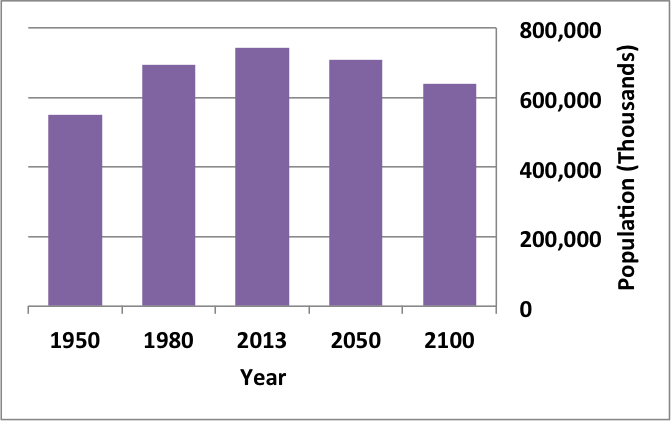| << Chapter < Page | Chapter >> Page > |



It would be impossible to discuss population growth and trends without addressing access to family planning resources and birth control. As the stages of population growth indicate, more industrialized countries see birthrates decline as families limit the number of children they have. Today, many people—over 200 million—still lack access to safe family planning, according to USAID (2010). By their report, this need is growing, with demand projected to increase by 40 percent in the next 15 years. Many social scholars would assert that until women are able to have only the children they want and can care for, the poorest countries will always bear the worst burden of overpopulation.
Scholars understand demography through various analyses. Malthusian, Zero Population Growth, Cornucopian theory, and Demographic Transition theories all help sociologists study demography. The earth’s human population is growing quickly, especially in peripheral countries. Factors that impact population include birthrates, mortality rates, and migration, including immigration and emigration. There are numerous potential outcomes of the growing population, and sociological perspectives vary on the potential effect of these increased numbers. The growth will pressure the already taxed planet and its natural resources.
Given what we know about population growth, what do you think of China’s policy that limits the number of children a family can have? Do you agree with it? Why or why not? What other ways might a country of over 1.3 billion people manage its population?
Describe the effect of immigration or emigration on your life or in a community you have seen. What are the positive effects? What are the negative effects?
Look at trends in birthrates from “Stage 4” countries (like Europe) versus those from “Stage 2” countries (like Afghanistan). How do you think these will impact global power over the next several decades? Does population equal power? Why or why not?
To learn more about population concerns, from the new-era ZPG advocates to the United Nations reports, check out these links: (External Link) and (External Link)
Caldwell, John Charles and Bruce Caldwell. 2006. Demographic Transition Theory. The Netherlands: Springer.
CIA World Factbook. 2011. “Guide to Country Comparisons.” Central Intelligence Agency World Factbook . Retrieved January 23, 2012 ( (External Link) ).
Ehrlich, Paul R. 1968. The Population Bomb . New York: Ballantine.
Malthus, Thomas R. 1965 [1798]. An Essay on Population . New York: Augustus Kelley.
Simon, Julian Lincoln. 1981. The Ultimate Resource . Princeton, NJ: Princeton University Press.
United Nations Population Fund. 2008. “Linking Population, Poverty, and Development.” Retrieved December 9, 2011 ( (External Link) ).
USAID. 2010. “Family Planning: The World at 7 Billion.” Retrieved December 10, 2011.

Notification Switch
Would you like to follow the 'Introduction to sociology course at grand river academy' conversation and receive update notifications?